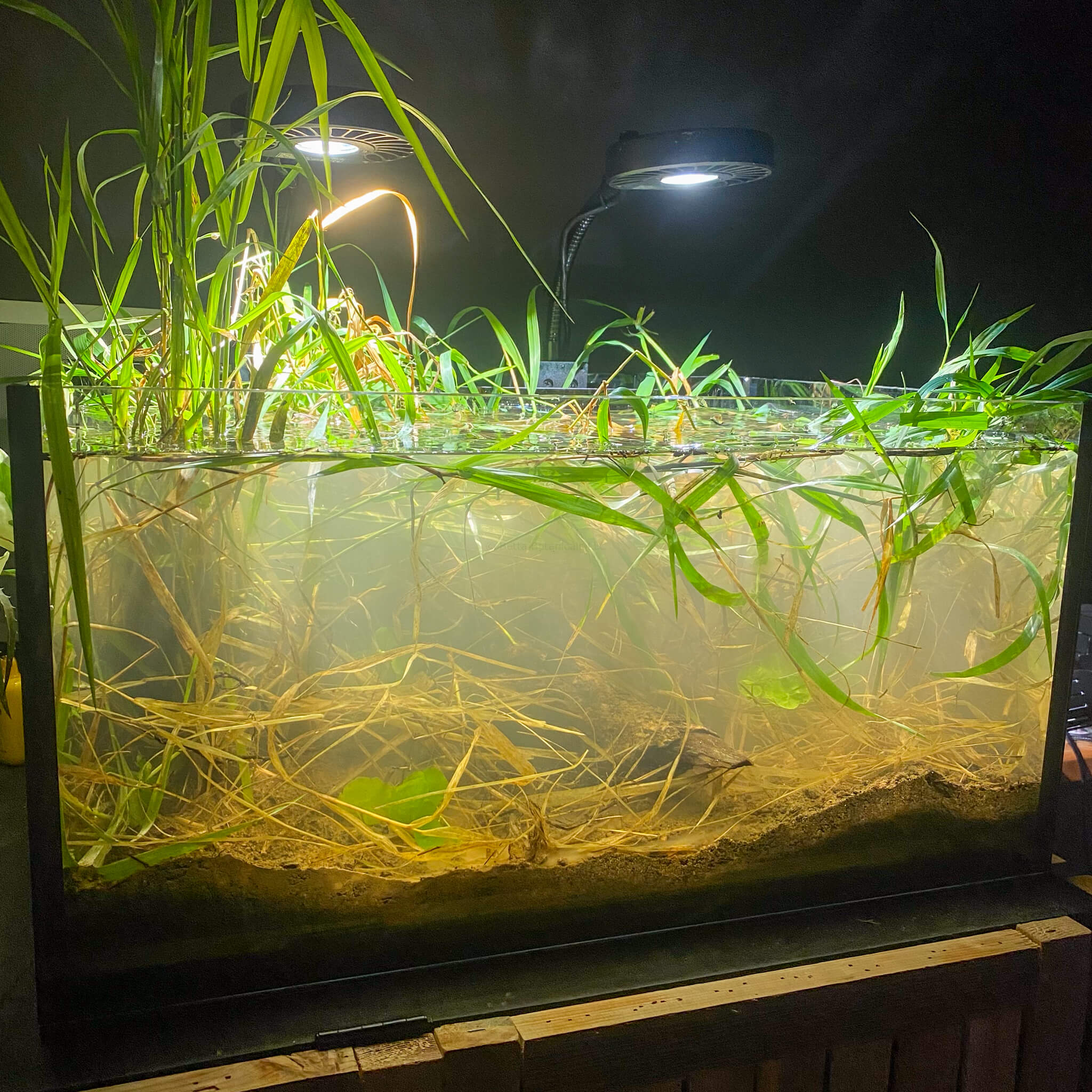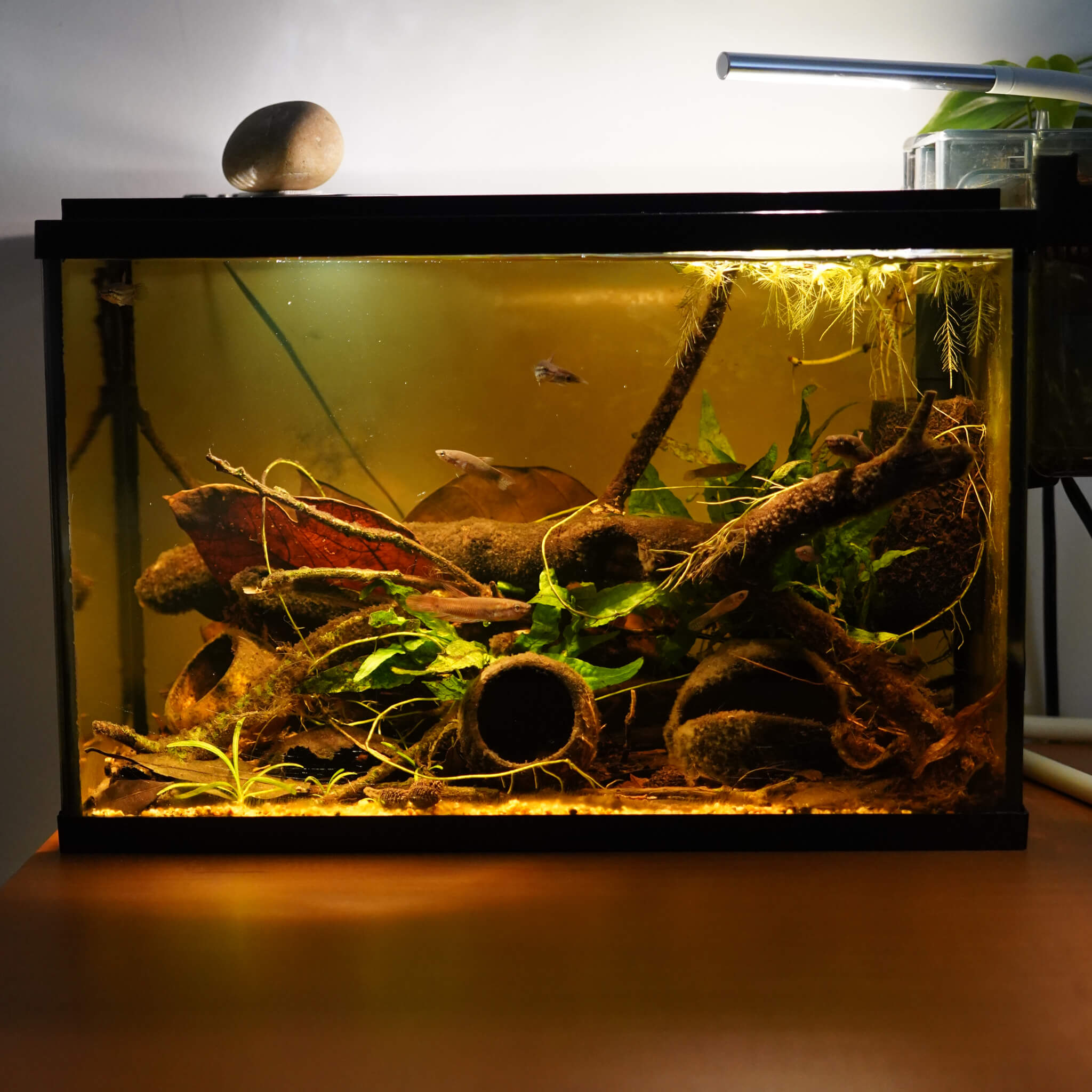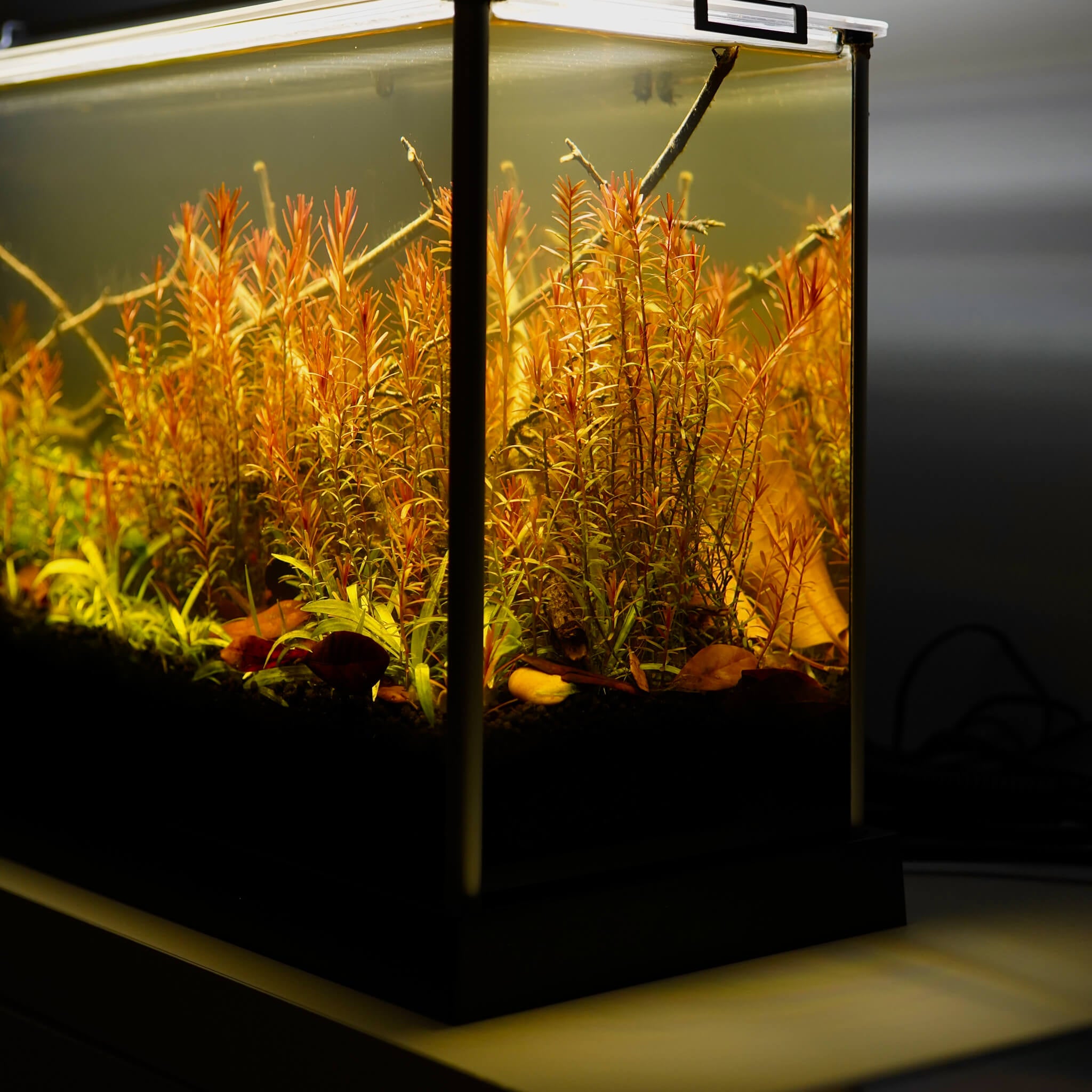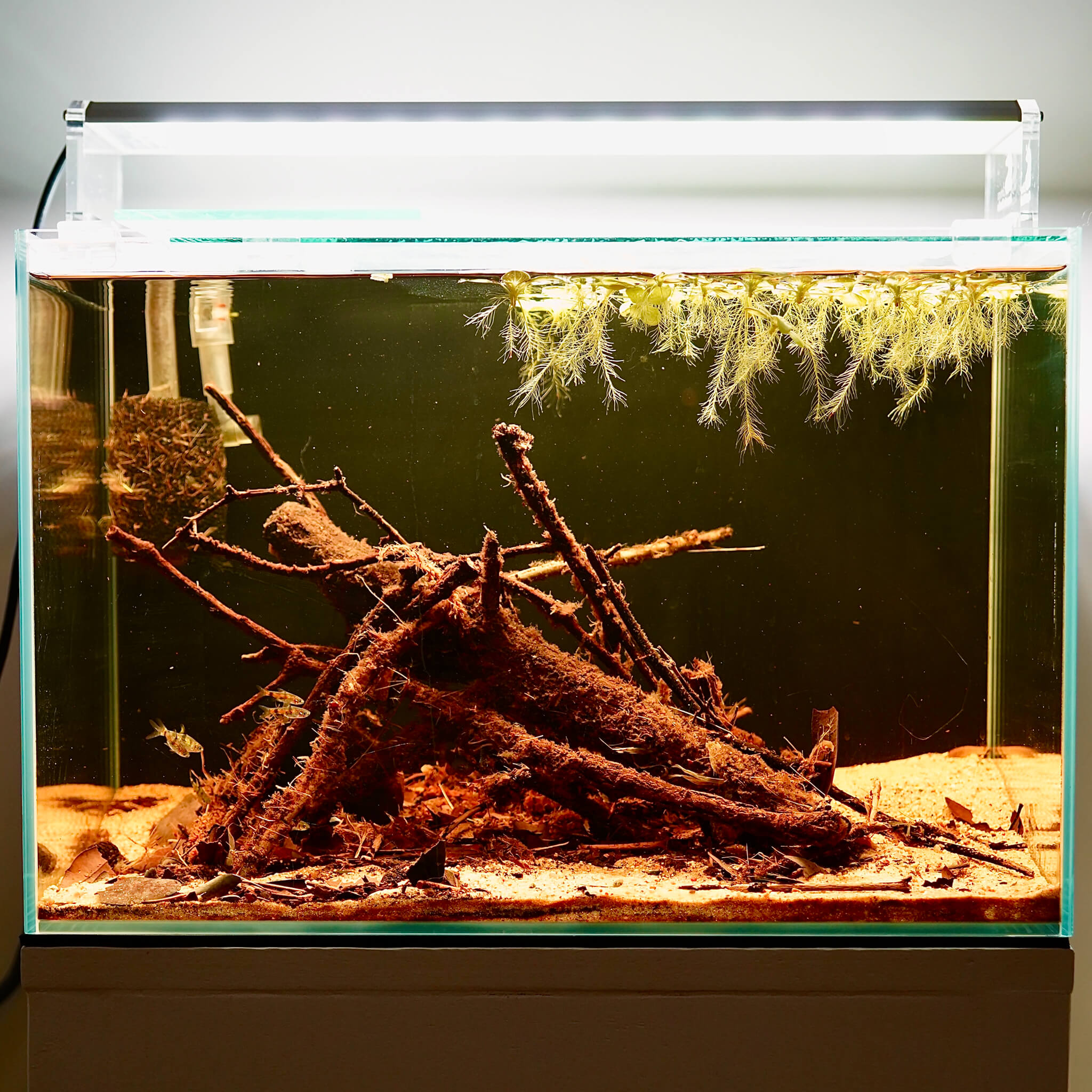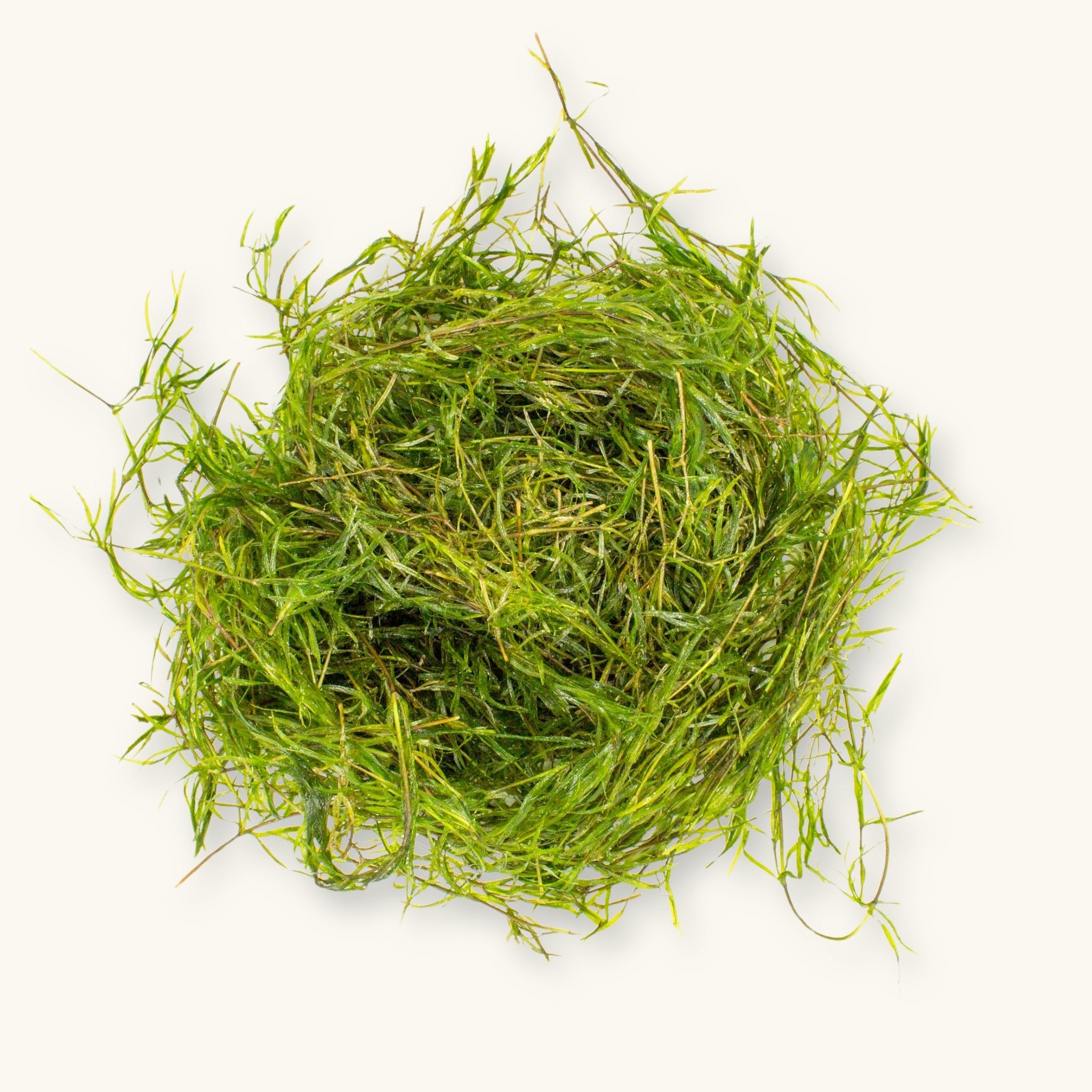
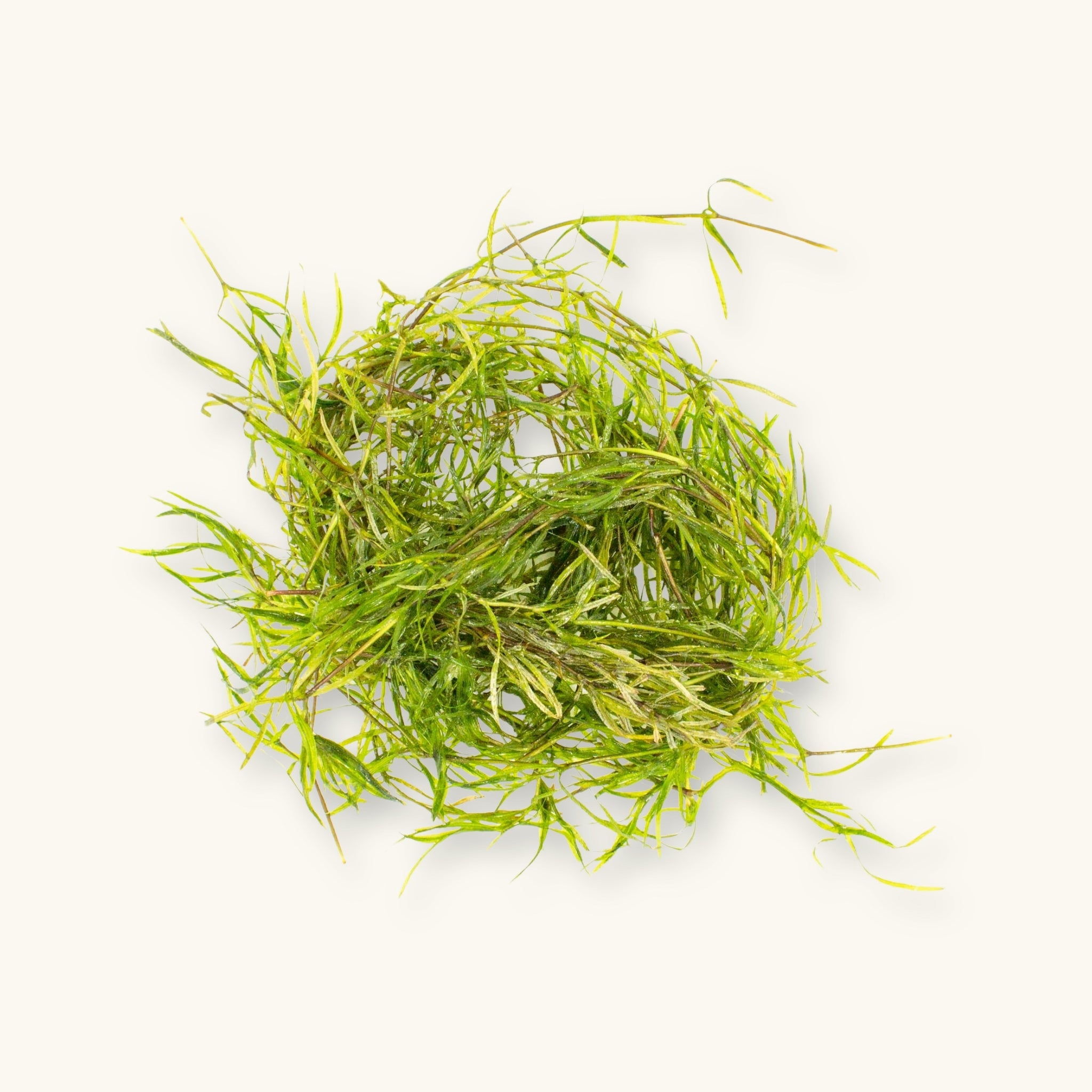
Guppy Grass | Najas guadalupensis
Guppy Grass
Scientific Name: Najas guadalupensis
Common Names: Southern Waternymph, Guppy Grass, Najas Grass, Common Water Nymph
Guppy grass (Najas guadalupensis) is a fast-growing freshwater plant native to the Americas from Canada down to South America, with introduced populations in Japan, Palestine, and Israel. Najas grass can be rooted in the substrate of your blackwater, biotope, or botanical method aquarium, or left floating at the surface. It gets its name from its ability to provide excellent shelter for baby fish, offering them protection from larger fish, while providing an abundance of surface area that grows supplemental nutrition for their early stages of life.
Guppy grass is quite hardy, and its ability to absorb excess nutrients makes it ideal for the beginner aquarist. Since it floats so close to the aquarium lights, it can help provide shade and cover to the ecosystem below. But, make sure that if its growth gets too dense, to pick low-light aquatic plants for the substrate below.
Caring for Guppy Grass in Blackwater Aquariums
Sold as: You will receive 1/4lb of Guppy Grass.
Care Level: Easy
Growth Rate: Fast
Lighting Requirements: Low to Medium
CO2: Not needed
Tint Tolerance: Low to High; if left floating, this plant tolerates higher levels of tint
Native Habitat: North America, Central America, and South America
All Plants may contain snails or snail eggs. We keep them in all of our tanks for the benefits they provide. Our blackwater aquarium plants are provided by H2OPlants in adherence to their Shipping and DOA Policies. Your curated selection will arrive in their packaging separate from your botanical & merch orders.

Guppy Grass | Najas guadalupensis
contrast the tint with greenery
While the aesthetic appeal of tinted waters can be quite attractive to us, the recreation of nature—which includes both submerged and emersed plants—is the end goal. Flora helps to improve water conditions, feeding patterns, spawning displays, and territory building.
Aquatic Plant FAQs
DOA Policy
Please ensure that you add a heat pack or cold pack to your orders if temperatures in your area are above 90°F or below 40°F. Click for more info on our DOA Policy.
Are these plants duckweed and snail free?
All Plants may contain snails or snail eggs, small macroinvertebrates, and duckweed. We keep them in all of our tanks for the benefits they provide. We have experienced the presence of small snails, ostracods, daphnia, and beneficial detritus worms.
Are your plants only for tinted water conditions?
Nope! All of our plants will grow perfectly in untinted aquariums that have CO2 and aquasoils, or low-tech planted aquariums. Our selection, though, is optimized for emersed plant growth and low- to medium-tinted water environments.
What is your aquatic plant shipping schedule?
We’re a small company and ship Tuesdays & Thursdays only. Orders placed Wednesday–Sunday → Ship Tuesday. Orders placed Monday–Tuesday → Ship Thursday
Are your plants just for bettas?
Nope. Our aquatic plants are safe for almost all aquariums, terrariums, vivariums, and paludariums. Many of our plants can be grown emersed in filter compartments, vivariums, or incorporated into wabikua.
What are Tannins?
Tannins are natural compounds released by leaves, seed pods, and bark as they decompose in water. They soften water, gently lower pH, and create the characteristic tea-stained tint found in blackwater habitats. But their role goes far beyond color—tannins fuel beneficial bacteria, fungi, and biofilms, which form the foundation of a healthy ecosystem. They also offer mild antifungal benefits and help reduce stress in fish by replicating the natural conditions they’ve evolved in. At their core, tannins are plant-derived antioxidants that connect your aquarium to the same processes at work in wild flooded forests and streams.




